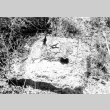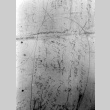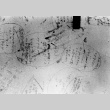PARTNER
Densho
Visit partner
COLLECTION ID
ddr-densho-35
DESCRIPTION
The Densho collection consists of historic photographs of early Seattle and surrounding areas, as well as current photographs of historical sites and community events. This collection includes photographs of Tule Lake, California; Minidoka, Idaho; the Nisei veterans Memorial Day service in Seattle, Washington, and photos of the Golden Potlatch festival in Seattle, Washington, c. 1911. Also included in this collection are a series of newspaper articles from The Crisis, a publication founded by W.E.B. DuBois in 1910, The Chicago Defender, the first African American newspaper to have a circulation over 100,000, and The Northwest Enterprise, an African American newspaper based in Seattle, Washington, published from 1920-1956.
INCLUSIVE UNIT DATE
c.1900-1999
BULK UNIT DATE
c.1900-1999
PHYSICAL DESCRIPTION
photographic prints; documents
CONTRIBUTOR
Densho
CREATORS
PREFERRED CITATION
Courtesy of Densho
RIGHTS
Copyright restricted
339 Objects











